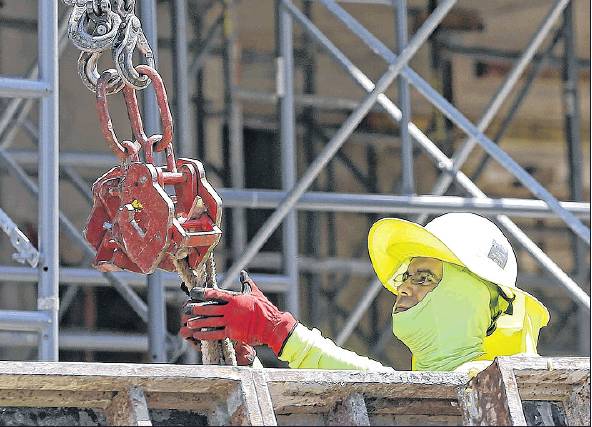GUEST COLUMN
Young workers can end labor shortage
By Mark Williamson
The building frenzy that has changed Atlanta’s skyline and neighborhoods in recent years has been accomplished by general contractors who’ve quietly struggled to find adequate labor supply. The common perception is that once Atlanta’s behemoth projects — like the new stadium developments — finish, labor will become more available for other local projects. However, what many don’t realize is that most of the laborers who worked on the stadium projects came from international subcontractors, and they will leave and move on to other projects in other states once their work in Atlanta is done. And so the labor shortage lives on.
The Associated General Contractors of America’s (AGC) national survey revealed that 66 percent of its members are struggling to find qualified workers to fill positions. The AGC also found that nationally there are 17 percent fewer people working in construction compared to the market’s peak, with Georgia seeing declines of 20 percent.
When the Great Recession collapsed the real estate market, many construction jobs essentially evaporated, leaving skilled laborers without work. Over the past eight years, despite a recovery that started slowly and then picked up momentum, more than 2 million of those former construction workers have since retired or transitioned to new careers, according to both the AGC and the National Home Builders Association.
And, as more high school graduates go to college, fewer go the route of skilled labor, meaning we have fewer newcomers to the construction industry. For every five tradespeople who leave the field, only one is joining it, according to Go Build America, an organization dedicated to bringing more people into the skilled labor pool.
If President Trump’s $1 trillion infrastructure plan comes to pass, it has the potential to make the labor shortage much worse, as public and private projects compete for the too-small pool of skilled workers available.
Let me put it this way, this labor crisis is happening to everyone in the general contracting field. It’s slowing down projects and driving up costs.
That’s the bad news.
The silver lining to this cloud is that opportunities in the construction trades are wide open to students, recent graduates and those looking for a new career path. Affordable training is easily accessible through public and private training programs, and the jobs awaiting graduates offer good pay and opportunity for advancement.
According to Go Build America, yearly earnings for nonresidential building construction workers average $47,528. If you pursue construction management, the average yearly salary goes up to $83,860 (and it doesn’t require a four-year degree). And, with the average age of the workforce being 47, there is plenty of opportunity for young people to enter the field and advance quickly.
Plus, skilled tradespeople get to work on cool projects like Pinewood Atlanta Studios, which our company helped build in Fayetteville.
The state of Georgia is working through several channels to help bring more people into the construction industry.
The state participates in the national Go Build America program. Georgia has rebranded its Go Build Georgia program to Trade Five, which works to increase awareness of opportunities in construction, manufacturing, telecommunications, energy and logistics.
The state launched this year the TradeFive grant and scholarship program, which offers financial assistance for students interested in training for those five critical-need industries. The aid is part of Gov. Nathan Deal’s High Demand Career Initiative (HDCI).
The HDCI recently launched its construction industry task force, which is made up of people in our business, who are motivated to get more people into the skilled labor pipeline as quickly as possible and to keep them flowing.
According to HDCI Program Manager Jamie Jordan, the construction task force will be working to bring more construction trades education into schools, and make sure interested high school graduates know how to enter post-secondary training.
One of the most important steps the task force is looking at is to expand apprenticeship programs. They are already strong in some trades, but apprenticeships can and should be expanded in all skilled trades. The Trump administration hasn’t offered any specifics yet, but also recently expressed support for growing apprenticeship programs across the country.
The construction industry needs more new blood. Millennials haven’t come into our business in the numbers we need to support our growing cities. We need to do a better job of showing them that you don’t have to sit behind a desk or earn a four-year degree to make a good living; technology is driving our industry and tech training courses are available for those interested; and salaries and opportunities for advancement are very competitive.
Millennials will be the ones to shape the future of our industry. The jobs are available; we just need to have them come in the door.
Mark Williamson is president and CEO of Randolph Williamson, a Peachtree City-based full-service commercial real estate company.

